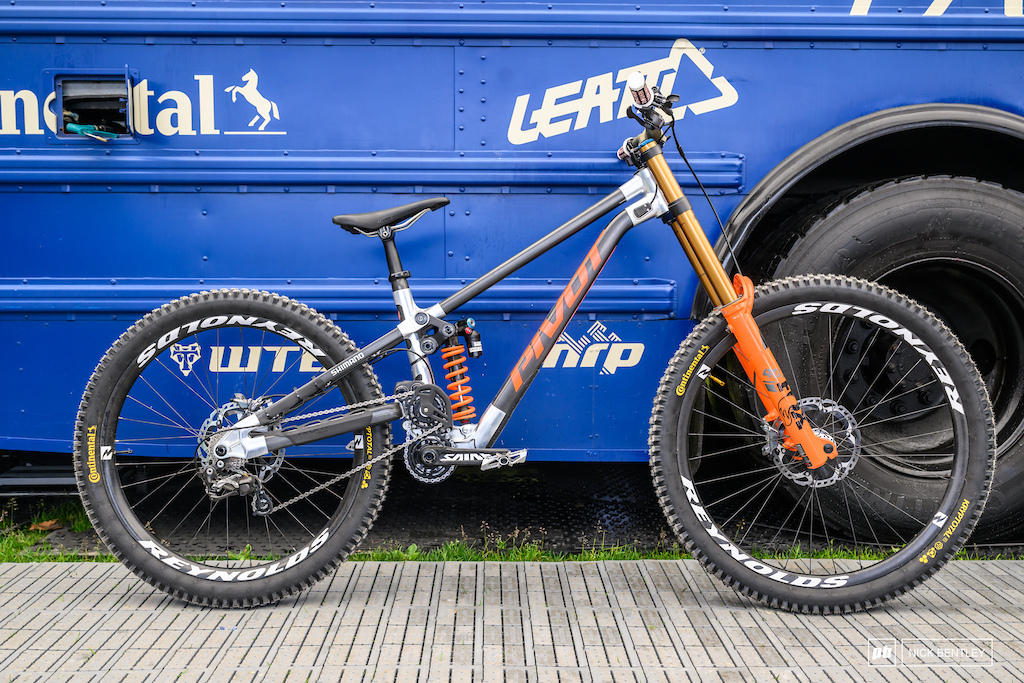
Although it’s been spotted through testing in New Zealand over the off-season, Pivot Cycles has fully let the cat out of the bag with the perplexing looks of their latest prototype carbon downhill bike. Behind all of the hardware lies Dave Weagles’ DW6 linkage design, but this one puts a clever spin on traditional high-pivots. Our photographer and detective on site caught up with Pivot Cycles to get all of the nitty-gritty details from Pivot Cycles’ owner, Chris Cocalis.
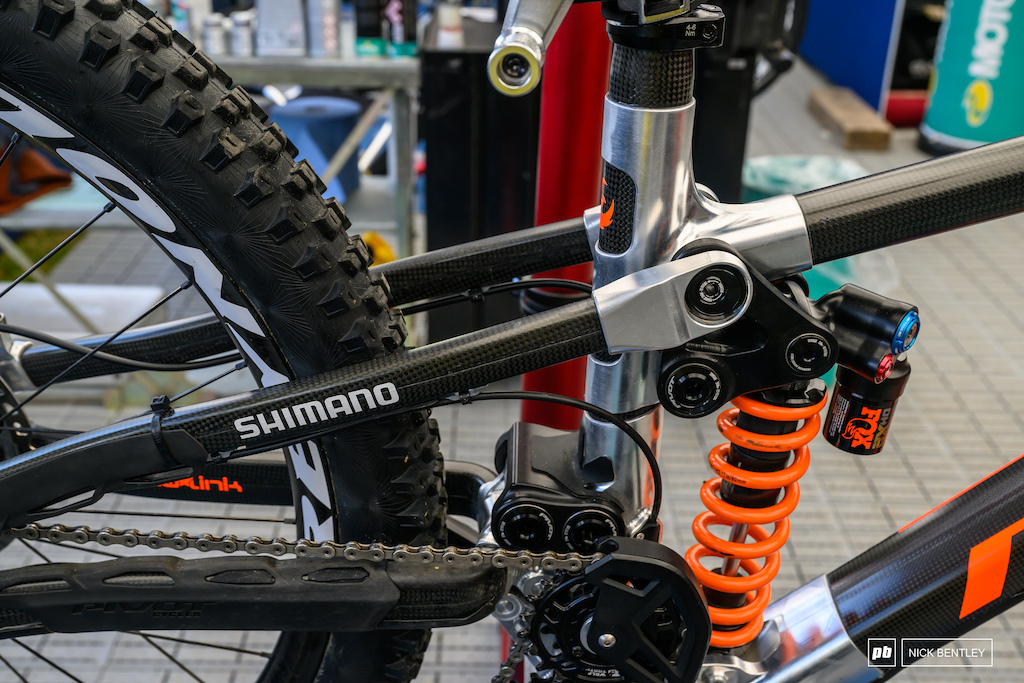
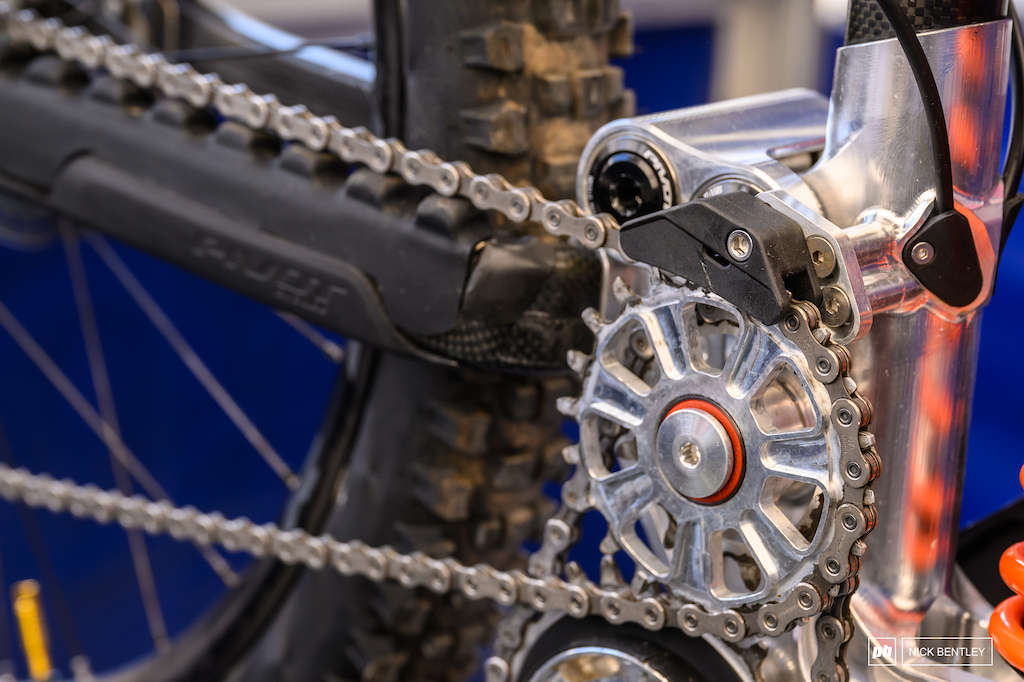
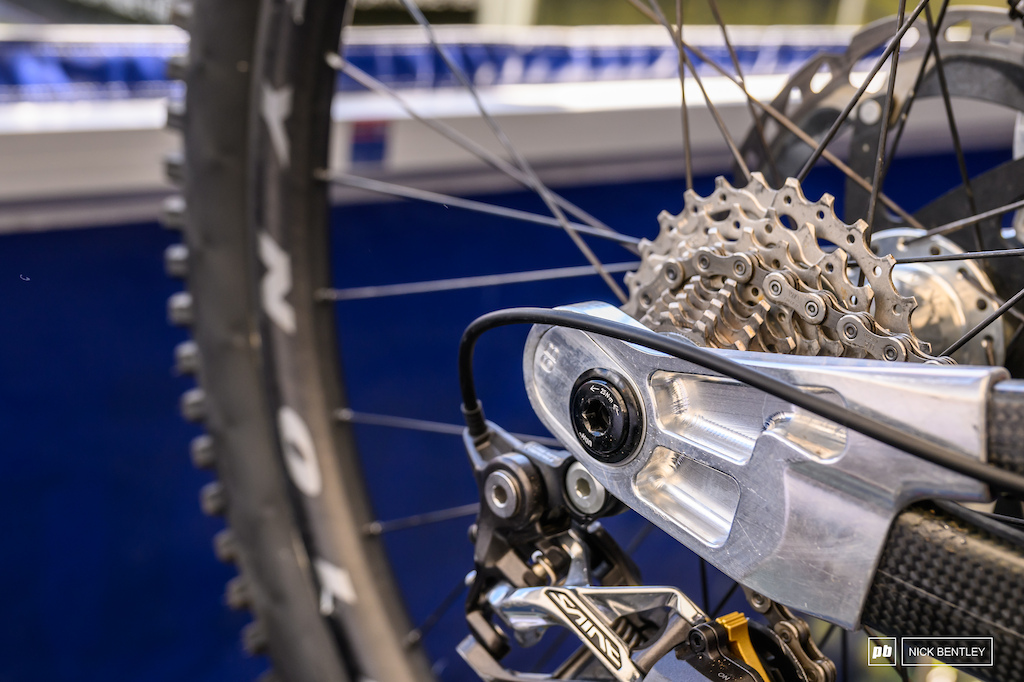

The prototype design uses two separate chains that turn around the main, high-pivot on large idler wheels. The chain drive in front feeds to the cassette, while another placed further inboard wraps around the chain ring. Another attribute to the DWF6 design is its ability to heavily reduce pedal kickback.
Since this frame design combines DW6 six-bar suspension and a high-pivot, the rear triangle actually has a small amount of vertical flex built-in. Cocalis and Weagle joked about calling the system DW5, as another take on the suspension theory, and may settle on DWF6, with the “F” standing for the flex factor.
There are actually two prototypes at Lenzerheide this weekend that Bernard Kerr has been swapping back and forth between. The first version has an adjustable chainstay length while the second proto has refined geometry, 3D-printed idler guides, and heavily machined drivetrain parts from Wolf Tooth that are said to be “nearly frictionless”.
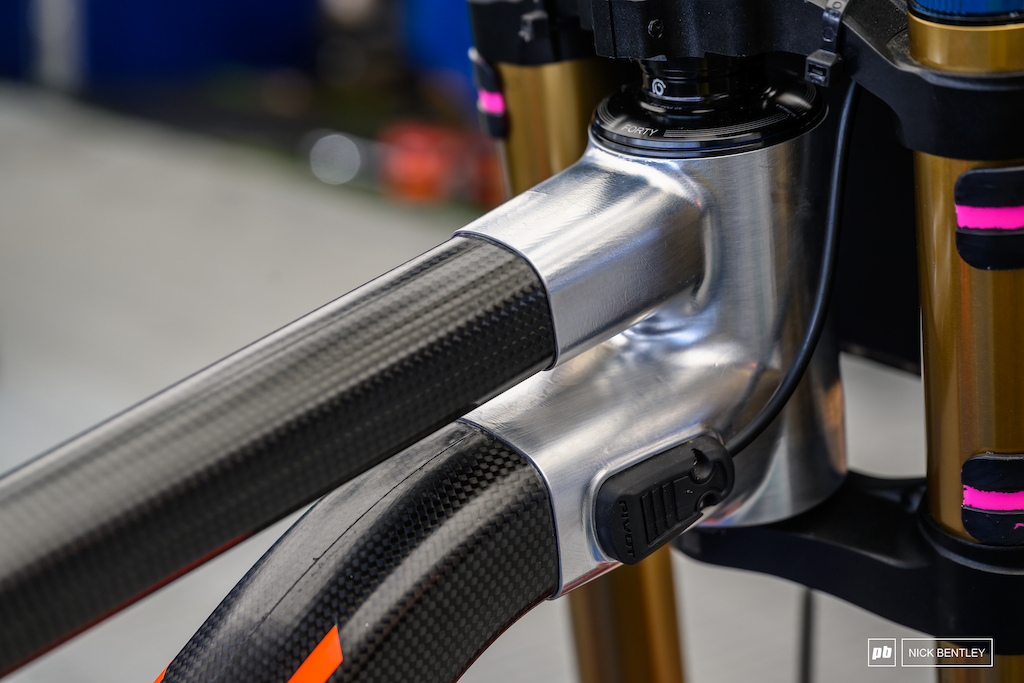

Pivot took a new route when it comes to prototyping, although everything is still manufactured on-site at their USA headquarters. Instead of building the first generation of frames from aluminum tubing and waiting for months for them to return from off-site heat treating, or building costly full-monocoque carbon molds, the engineering team designed simpler carbon tubes that are bonded into CNC’d aluminum lugs. This cut down the project time to just two and half weeks.
Compared to the current production Phoenix this proto weighs nearly the same, thanks to finite element analysis, and retains almost the same torsional stiffness in the front triangle – just 2% less. The very first prototype was similar to the production Phoenix but used a longer lower link. That gave a similar wheel path to the bike seen here, but after testing back to back with the DWF6 bike, the engineering team decided to push forward with the high-pivot design which averaged faster times in testing.
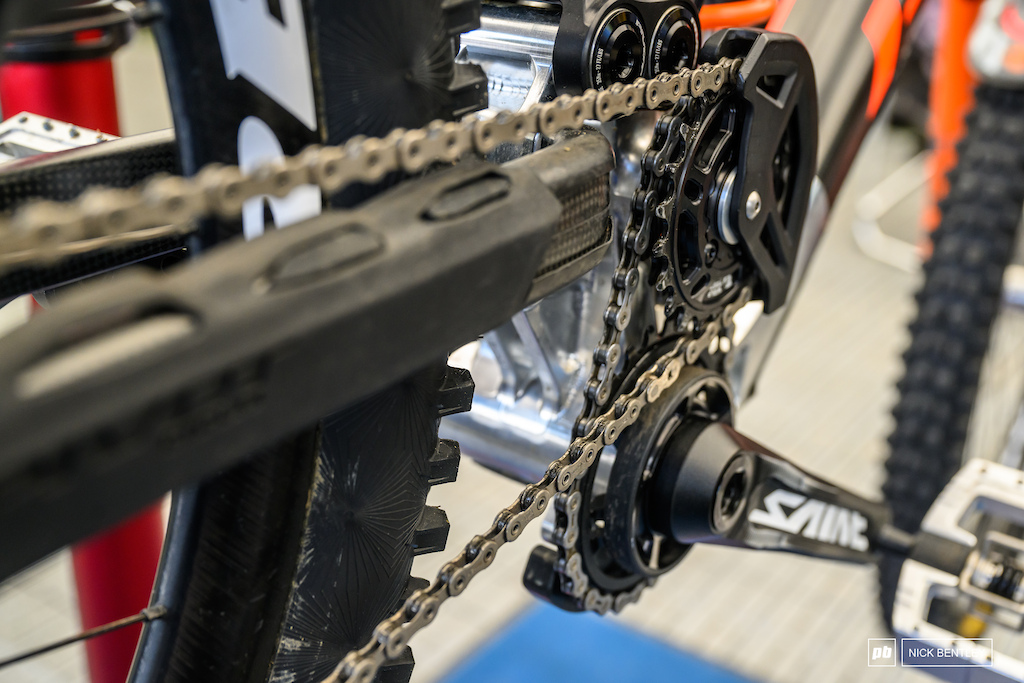
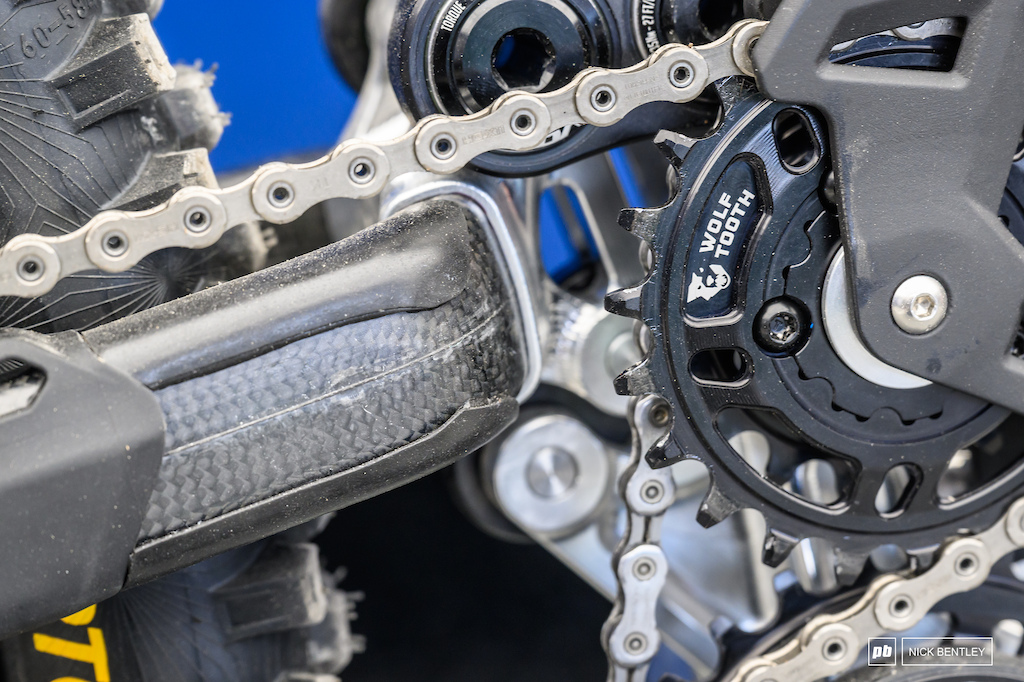

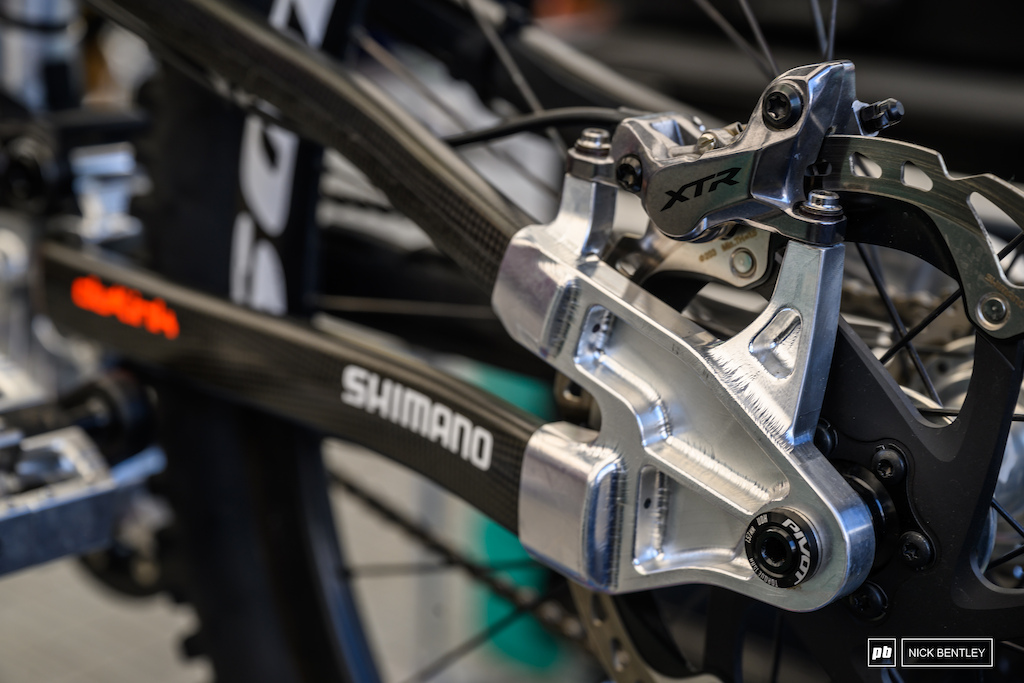
Chris says that the race team and engineers are still in the testing phase of leverage rates, so this may not be the final version, however, Cocalis is adamant that the production bike will be a full-carbon frame.
